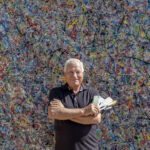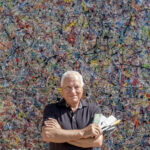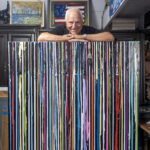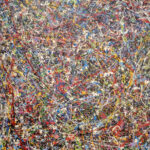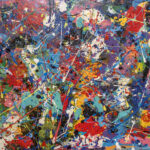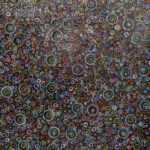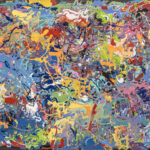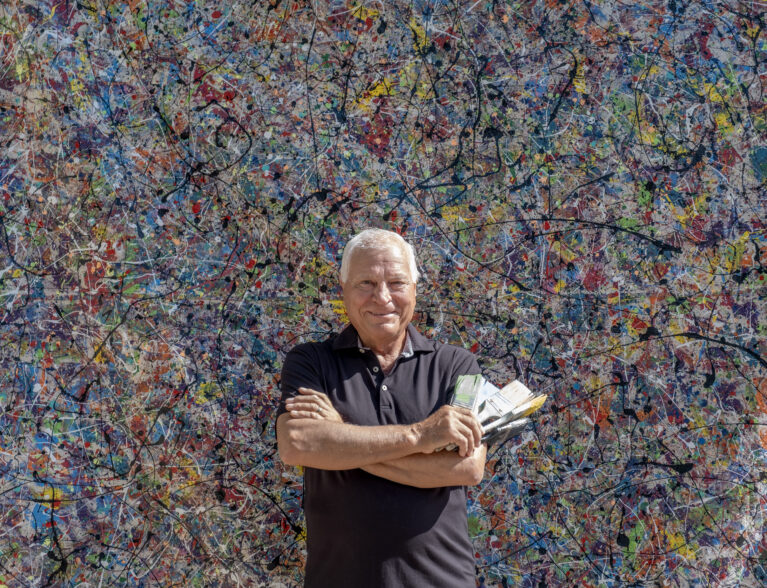
Domenico “Mimmo” Amelio fairly bubbles over with enthusiasm when he speaks about the remarkable life he has led, particularly anything related to his family, a successful decades-long career in the restaurant business, and his artwork.
Born in Naples, Italy, Amelio immigrated to the New York area in 1966 before he, and many others of his extended family, made their way to Vero Beach.
“All my siblings, actually, were in the restaurant scene. At one time, we all worked together when we came in the ’70s. Then it came to the point, everybody wants to express themselves, so we went out on our own,” says Amelio.
When they branched out, he founded the Italian Grill (later selling it to some employees) and the much-admired Scampi Grill.
His sister Nina’s husband, Carlo DeChellis, had been the first to move here, opening the Pizza Queen and later Carlucci’s Gourmet Market. The former Bella Napoli was owned by his sister Maria and husband Joseph Salierno, and his brother, Joseph “Peppy” Amelio, started Pomodoro Grill and Johnny D’s Market & Bistro.
Scampi, Pomodoro and Johnny D’s are now run by the second generation – Mimmo’s son Alessandro “Alex” at Scampi, and Peppy’s sons at Pomodoro and Johnny D’s.
Amelio says that his work schedule meant putting his artwork on the back burner, so to speak, although he did paint whenever time allowed; with his works often decorating the walls of the restaurants.
His creativity also spilled over into the dishes, where presentations were enhanced with an artistic spin.
“I think I was the first one to send out dishes with color on it. I started with taking all the tricolor peppers, the yellow, the red, the green and the orange, and cut them into small little cubes, mix it up and just dress it (the plate). I used to have fun with that.”
And just as he delighted in experimenting with choices for his menus, Amelio says he has always varied his painting styles and mediums. Some of his earlier works tended toward more the traditional before moving into abstract expressionism and cubism.
“Artists, they’re all copycats. Everybody makes a little change here, a little change there. I’m a very curious painter. I shift constantly. From crayon to oil to acrylic to pastel to watercolor; I like to touch the different media,” Amelio explains.
In the studio alongside his home, stacks of works highlight that passion. Many of them showcase Astroism, a school of “airborne painting” launched by his friend Ron Van Sweringen, who died in 2016.
Unlike Jackson Pollack, who dripped paint onto canvases, Amelio says Astroism is done “up in the air,” with paint thrown onto an upright canvas.
“He was, actually, a great artist. He was a realistic painter and he suddenly shifted to this,” says Amelio. He comments that he later learned Van Sweringen had actually begun the process of throwing paint in frustration, after discovering he was terminally ill.
In January 2010, Amelio and Van Sweringen opened a show at a gallery on 14th Avenue.
“It was just me and him at the time because nobody was following the idea. When we did this show, people were frowning on it. Vero Beach didn’t accept us very well. I guess it was just too new for the area, too bold,” he recalls.
“But a critic opened up somebody’s eyes, and the Mennello Museum in Orlando bought one of Ron’s paintings. And from that point on, it did make a little wave. I sold a lot of these things, believe it or not.”
Amelio also experimented with an offshoot that he calls color fusion, explaining, “It’s more fluids; you throw it on the canvas and let it take over.”
Similarly, he has incorporated Astroism into other styles, such as with some Picasso-ish works, and adding in objects (a technique Van Sweringen called Constructed Astroism).
Another fun piece has multiple lines of paint colors dripping down the canvas from assorted paint brushes perched at the top.
“When I put all these paintings in one room, people can never believe that it was done by the same person. My wife tells me, ‘You have a multiple-personality, and it reflects in your paintings too,’” says Amelio.
Amelio says that while he played with crayons and pastels growing up, he was one of eight children, so painting wasn’t really an option. He is now making up for lost time.
“When I get on the canvas, I’m a child; I want to have fun. I don’t really paint to sell. I paint to have fun. It keeps me going. It keeps me also young. I can spend countless hours in here.
I put my classical music on, and I find a joy,” says Amelio.
Amelio laughs that about 13 years ago he began producing wearable art – hand-painted neck ties, bow ties, scarves, COVID masks and even shoes. The concept originated as a way to conceal stains on the ties of the waitstaff, but it took off and he now creates new collections every year.
They even generated interest in England. When a customer wore one of his colorful bow ties to Buckingham Palace, it stood out against the sea of black bow ties and caught the eye of a photographer, launching a new wave over there.
His artworks have been featured and sold in numerous galleries in Vero and elsewhere, although he says selling isn’t his main objective.
“Then, if they go out and find a home, it’s OK with me. Every once in a while, you need to sell a piece to keep your hobby going; it’s an expensive hobby.”
Photos by Joshua Kodis
- Mimmo Amelio
- Mimmo Amelio
- Mimmo Amelio

